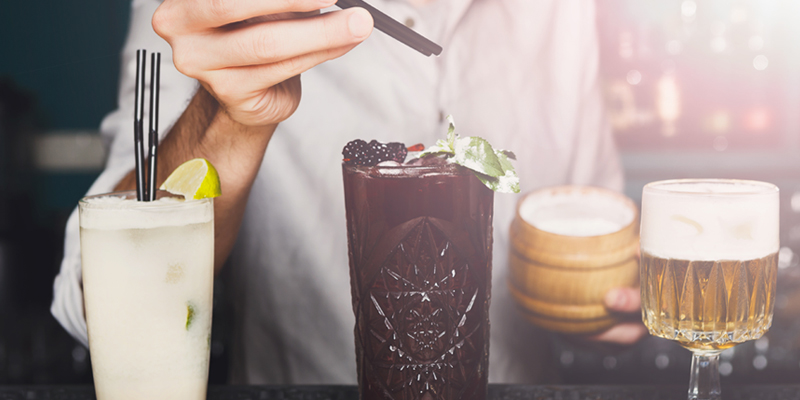“Not too sweet.”
For many bartenders, these three words are like daggers to their hearts, or a way to instantly get put on their “jackass” lists.
“I would say it is the most common guest instruction or request,” says Allen Lancaster, master cocktail craftsman at The Bar at The Spectator Hotel in Charleston, South Carolina. “It happens every evening without fail and generally more than once.”
If you’re guilty of making this request, rather than feeling bad (or committing the sin again), first consider why you may fear a drink that’s sweet.
“I’d say the foremost reason would be exposure to ‘corporate’ cocktail menus,” Lancaster says. You know them — the chain restaurants with their lists of fruity, sugar-laden libations that are cloyingly sweet. If you have had that bad experience in the past, it’s natural to see certain ingredients on a menu and worry. Lancaster also says the low-carb and low-sugar crazes may be to blame, plus a third culprit. “I’d venture to guess that the male audience views these drinks as somehow less manly,” he adds.
Whatever the reason, know that “sweet” isn’t a bad thing in a drink. “Any ‘sweet’ component is necessary for the purpose of balance,” Lancaster explains. “When a cocktail has other elements such as booze, acid, and bitterness, the sweet ingredient will not make the drink taste sweet. Rather, it will round out and complement the other ingredients.”
So don’t freak out over words like syrup, honey, or fruits; the cocktails need those things, otherwise they would taste horrible. For example, the Flapper’s Delight at The Bar is a take on the classic French 75. It’s made with gin, port, verjus, St. Germain, concord syrup, fresh lemon juice, and Prosecco. Concord grape syrup may have you believing that the cocktail would be candy-sweet, but without it, the drink would lose the grape flavor and completely offset the gin, Lancaster says. Plus you need that syrup to balance out the acidic verjus (essentially unsweetened grape juice) and lemon juice and create a well-rounded drink.
Or take the Provocateur, a winter caipirinha. The ingredients are cachaca, green Chartreuse, rosemary-muscovado gomme syrup, and fresh lime juice. “Not only does the syrup provide a tad of sweetness, but it also lends a dark depth, while the rosemary offers a rich, winter flavor to the cocktail,” Lancaster says. “It balances the lime juice and rounds out the subtle bitterness of the cachaca.”
As long as you are at an establishment where the bartender takes care to make great drinks, trust that you’re in good hands. And if you’re still not sure, ask him or her what the drink you’re eyeing is like. “A bartender should take the time to explain the purpose of ‘sweet’ ingredients and navigate guests through the cocktail experience,” Lancaster says.

